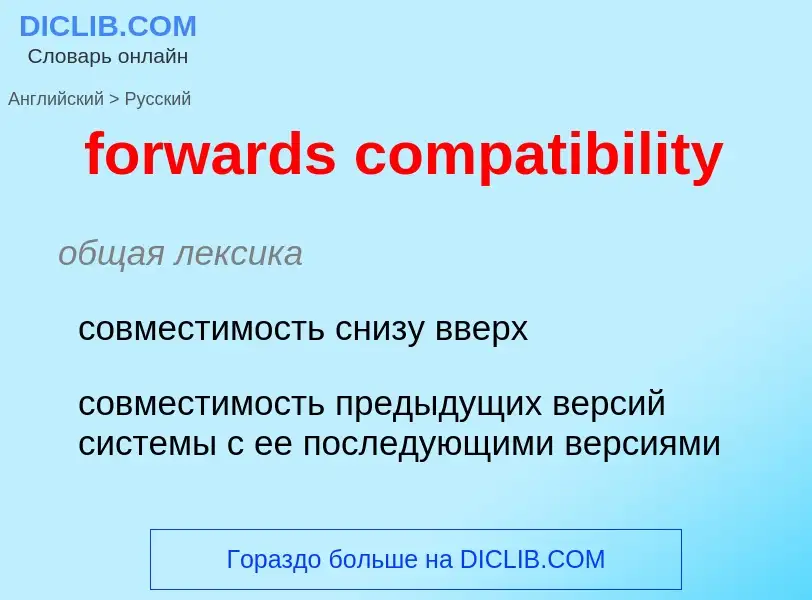Tradução e análise de palavras por inteligência artificial ChatGPT
Nesta página você pode obter uma análise detalhada de uma palavra ou frase, produzida usando a melhor tecnologia de inteligência artificial até o momento:
- como a palavra é usada
- frequência de uso
- é usado com mais frequência na fala oral ou escrita
- opções de tradução de palavras
- exemplos de uso (várias frases com tradução)
- etimologia
forwards compatibility - tradução para Inglês
общая лексика
совместимость снизу вверх
совместимость предыдущих версий системы с ее последующими версиями
антоним
общая лексика
совместимость снизу вверх
совместимость старых версий ПО с новыми версиями, совместимость с младшими или ранее разработанными моделями, но не наоборот
антоним
Wikipédia
Forward compatibility or upward compatibility is a design characteristic that allows a system to accept input intended for a later version of itself. The concept can be applied to entire systems, electrical interfaces, telecommunication signals, data communication protocols, file formats, and programming languages. A standard supports forward compatibility if a product that complies with earlier versions can "gracefully" process input designed for later versions of the standard, ignoring new parts which it does not understand.
The objective for forward compatible technology is for old devices to recognise when data has been generated for new devices.
Forward compatibility for the older system usually means backward compatibility for the new system, i.e. the ability to process data from the old system; the new system usually has full compatibility with the older one, by being able to both process and generate data in the format of the older system.
Forward compatibility is not the same as extensibility. A forward compatible design can process at least some of the data from a future version of itself. An extensible design makes upgrading easy. An example of both design ideas can be found in web browsers. At any point in time, a current browser is forward compatible if it gracefully accepts a newer version of HTML. Whereas how easily the browser code can be upgraded to process the newer HTML determines how extensible it is.

